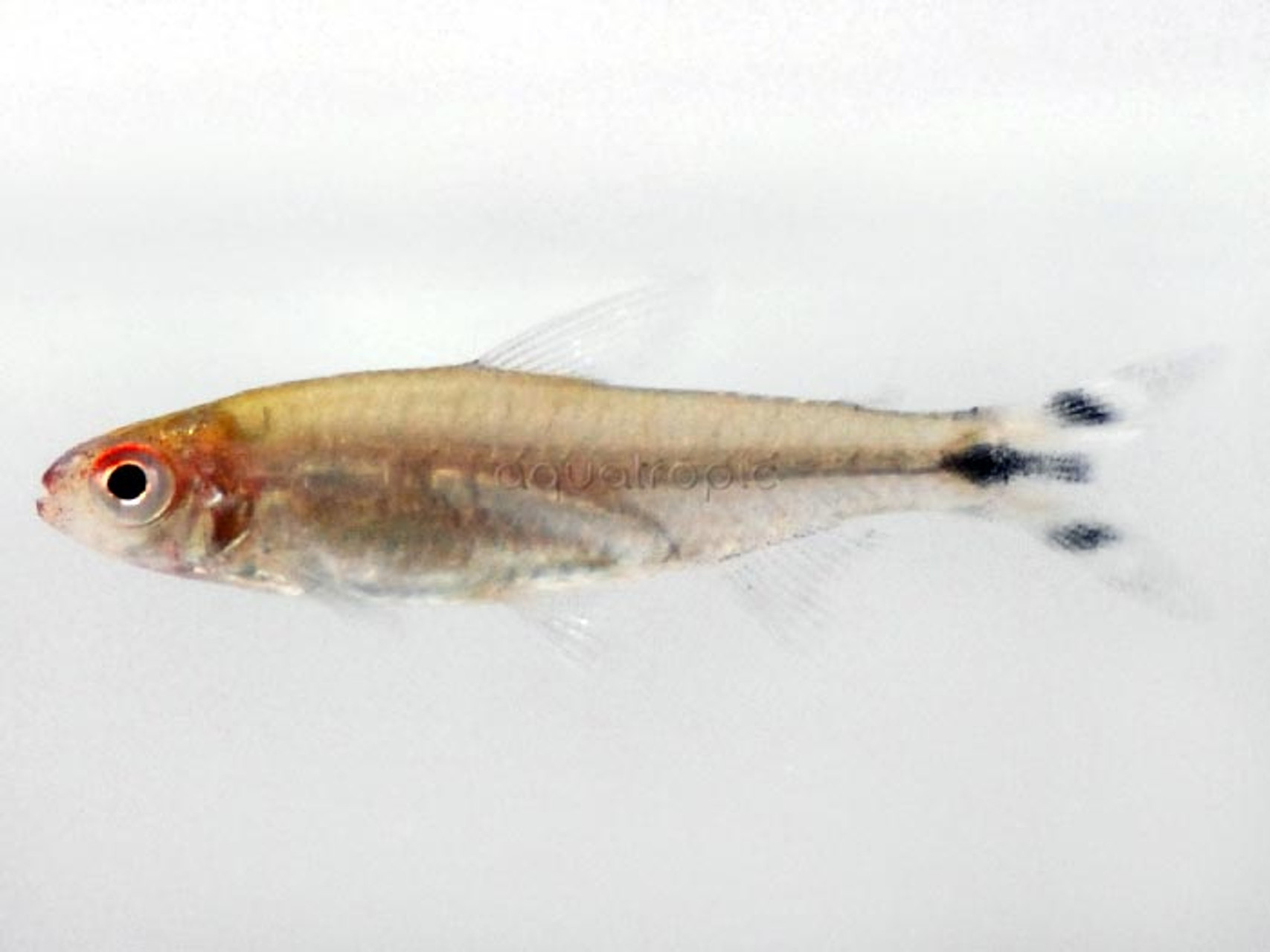Rummynose Tetra (Hemigrammus bleheri)

Rummynose Tetras are one of the most sought after fishes for planted aquariums, providing an especially pleasing mix of color and motion. Unlike the equally popular Cardinal and Neon Tetras (Paracheirodon spp.), the rummynoses (Hemigrammus spp.) form tight schools rather than loose shoals. This behavior creates a very natural look in larger systems, giving an impression of what a river ecosystem might really resemble underwater, with groups of fishes scurrying this way and that.
But aquarists face a confusing situation when trying to identify which of the rummynoses they actually have. The “true” Rummynose Tetra is Hemigrammus rhodostomus (the scientific name literally translates as meaning “red-mouthed”). But you’ll also see a different species, H. bleheri, traded under this same name (or, alternatively, as the Firehead Tetra), and there’s even an unrelated fish, known as the False Rummynose Tetra, that belongs to an entirely different genus, Petitella georgiae. It is a confusing situation.
Fortunately, mature specimens in good health can be told apart easily enough (though pale, sickly specimens can be far more challenging to accurately identify, as the loss of colors can be highly misleading). In Petitella, there is a fairly thick black line extending forward from the caudal peduncle. This is only faintly present in H. rhodostomus and mostly lacking in H. bleheri. These latter two also have a pair of small black spots above and below this line.
The amount of red on the head is also useful. The true Rummynose Tetra (as well as the False Rummynose) have red that is limited to the head, never extending beyond the gill cover, while the Firehead Tetra (H. bleheri) has red that can extend further back along the midline in a roughly triangular extension. These are all, however, beautiful fishes with similar care requirements.
As with any small South American tetra, keep these in as large a group as possible. Especially in larger systems, dozens can be kept together to provide a very natural look. Water temperatures should be on the warmer side, making this a fine choice to be kept alongside discus. Feed a mixed diet of flake foods and frozen foods, particularly those high in astaxanthin, which will help to accentuate the vivid reds that make these fishes so beloved.